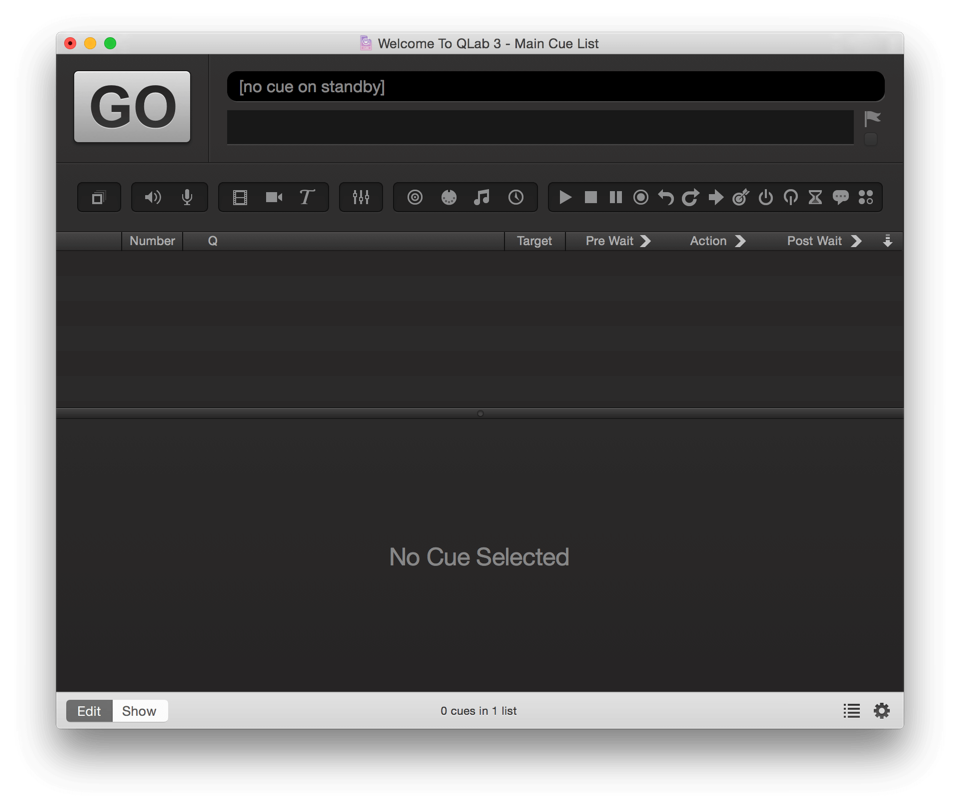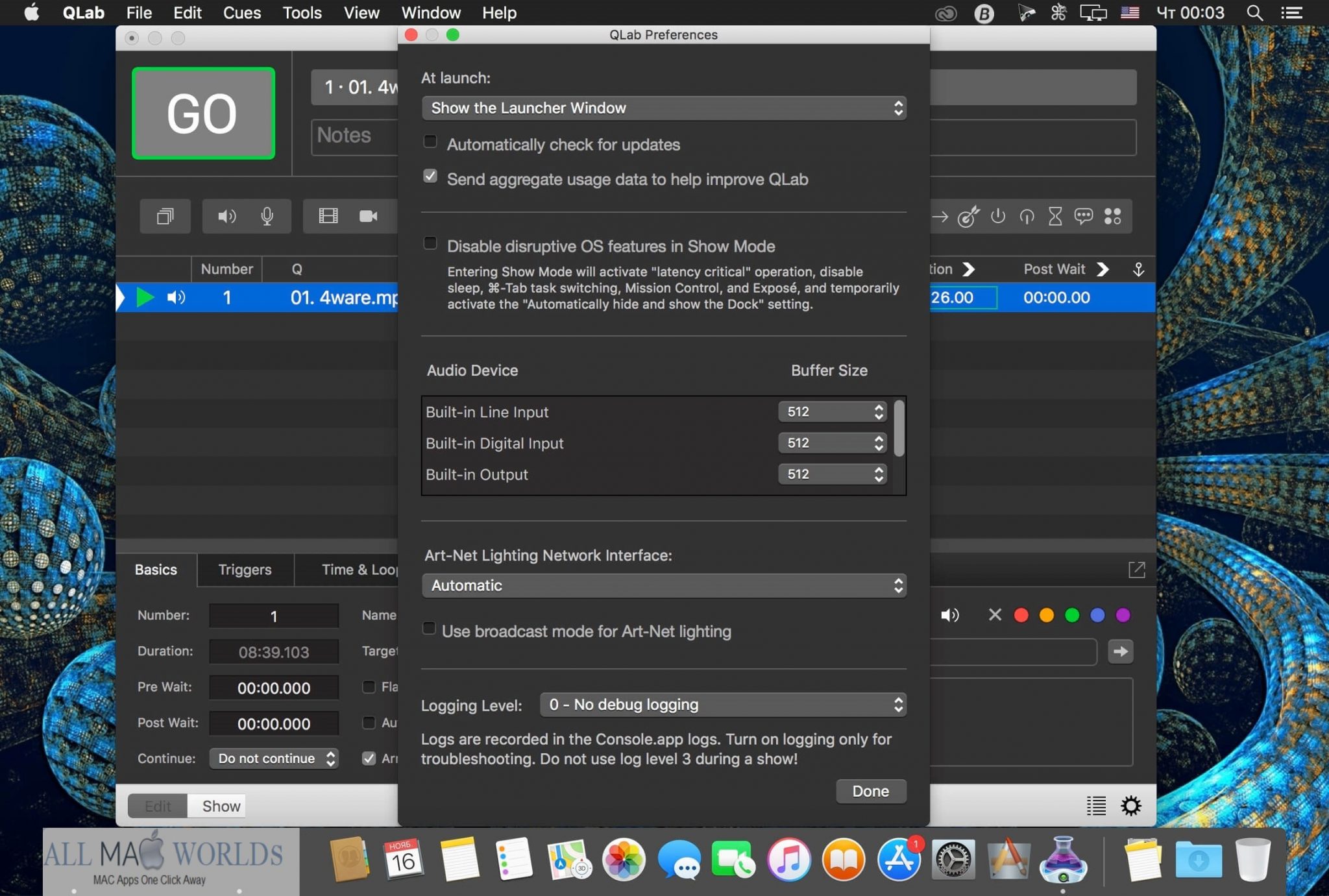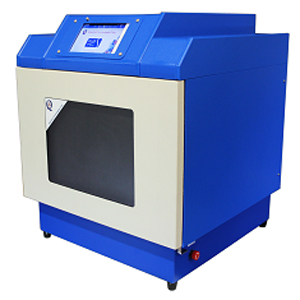

Enable "Read-Only Mode" to follow along without worrying you'll accidentally trigger a cue. Updates in QLab are instantly reflected in QLab Remote and vice versa. Automatically finds any QLab workspace on the network. Optional In-App Purchases are available to unlock show control, editing, and light tools features.
#QLAB REVIEW FREE#
QLab Remote is free to use in "Read-Only Mode", which allows you to view a workspace & follow along worry-free and also includes the unlimited ability to flag cues & edit cue notes. Change the geometry of a video cue from the stage.

Get out of the booth and edit your QLab workspace from wherever you are. Some features require a specific minimum version of QLab 4. QLab Remote requires a connection to QLab 3.0 or later.
#QLAB REVIEW SOFTWARE#
Against its newer peers the Q-DAC sounds a little out of its depth.QLab Remote is the official iOS companion app for remote control of QLab, the award-winning live show control software for macOS. We weren't blown away by the Audiolab the first time round, and another look at it has confirmed it. Sure, the Audiolab is a more flexible unit than either, but that doesn’t count for much unless the sound is similarly strong. The Q-DAC also falls short of matching the sound of similarly priced rivals such as the Musical Fidelity M1 DAC, or bettering cheaper alternatives such as the Arcam rDAC by a convincing margin. While we think the Q-DAC is a decent option, it lacks the talent to be considered an ‘M-DAC lite’. So there’s talent here, but we're not bowled over. The Audiolab insists on sounding so inoffensive to the point where it becomes just a touch dull. 5 by the Scottish Chamber Orchestra and rival DACs lead the way in terms of detail and dynamics. Play a 24-bit/192kHz version of Beethoven's Piano Concerto No. Play a spot of Adele's Rolling in The Deep and Audiolab's impartial, innocuous tone is clearly there.īut the Q-DAC just doesn't quite have the resolution of the very best, nor does it communicate dynamic shifts and the rhythm of a track as convincingly as some. Switch to the Q-DAC's headphone socket and the pleasantness continues. Tonally, things are relatively neutral, but perhaps more importantly the balance between the bass, midrange and treble is nicely judged, with no one part of the frequency spectrum gaining undue prominence. Trying a 16-Bit/44.1kHz rip of Dvořák’s 'New World' Symphony (through USB from a MacBook) shows a good level of insight and a precise way with stereo imaging.

All the various elements are packaged and presented in a way that sounds completely inoffensive. The Audiolab laps up Paloma's striking vocal, but doesn't detract from what's going on elsewhere in the track.

Play a WAV file of Paloma Faith's Never Tear Us Apart though the coaxial input, and the track sounds controlled and balanced. The differences aren’t massive, but the extra smoothness of optical doesn’t outweigh the slight loss of punch and precision it exhibits. It deals fairly with all the inputs, though as usual we find ourselves preferring the sound through the coaxial and USB connections to that of optical. Once given time to warm up thoroughly, the Q-DAC turns in a good performance. It just sounded more vibrant and rhythmically surefooted through our reference Bryston BP26/4B SST2/ATC SCM50 set-up Sound quality The differences between them are subtle and the choice comes as much down to taste as anything else.Īfter playing around with all the options we formed a distinct preference for the Optimal Transient settings, particularly the XD option. Compare it to the Arcam irDAC's remote and it's all a bit fussy.Īs is Audiolab’s way there are plenty of digital filter options – seven, to be precise. So, what’s it like in use? The simplified control arrangement – there’s no large control knob to help scrolling or to enable entering a particular option – means working our way through the menu isn’t quite a pleasant as it could be.


 0 kommentar(er)
0 kommentar(er)
